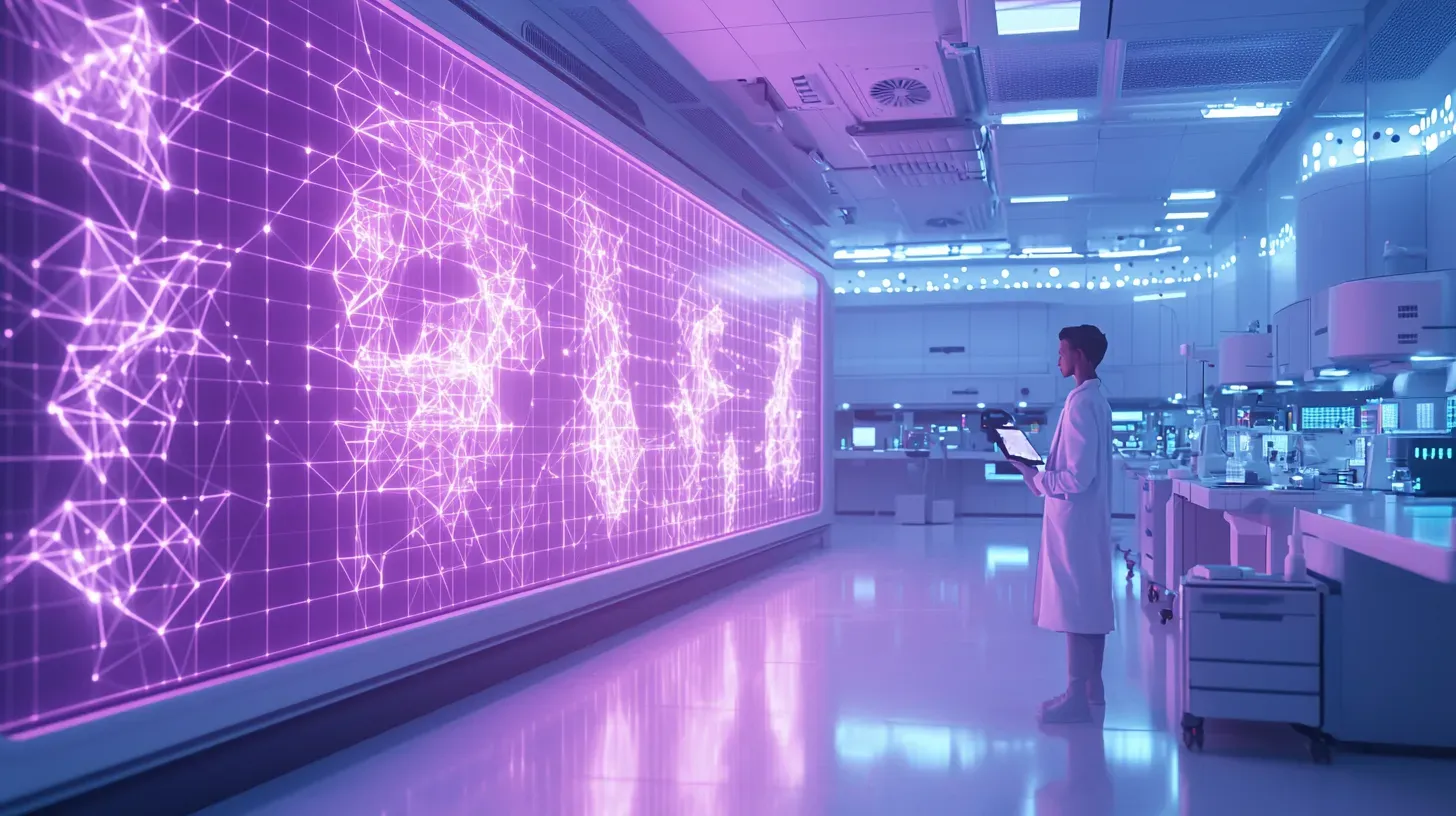Understanding Self-Driving Vehicles with an Innovation Keynote Speaker

Understanding Self-Driving Vehicles with an Innovation Keynote Speaker
Self-driving vehicles have become a hot topic of discussion in recent years, captivating the imagination of both tech enthusiasts and everyday commuters. The concept of having cars that can navigate the roads without human intervention has long been a dream, but it is now becoming a reality thanks to advancements in technology and the tireless efforts of engineers and inventors.
Understanding the Concept and Importance of Self-Driving Vehicles
Before we delve into the intricacies of self-driving vehicles, let's first grasp the concept and understand why they are so important. At its core, a self-driving vehicle is a car or truck that utilizes a combination of sensors, artificial intelligence, and machine learning algorithms to operate without human input. These vehicles are designed to analyze their environment, make decisions, and perform the required actions to navigate safely and efficiently.
Self-driving vehicles rely on a multitude of sensors to gather data about their surroundings. These sensors include cameras, radar, lidar, and ultrasonic sensors, which work together to create a detailed and accurate picture of the vehicle's environment. By constantly monitoring the road, these sensors can detect obstacles, pedestrians, and other vehicles, allowing the self-driving vehicle to make informed decisions in real-time.
One of the key advantages of self-driving vehicles is their potential to significantly improve road safety. Human error is a leading cause of accidents on the road, with factors such as distracted driving, fatigue, and impaired judgment contributing to a large number of collisions. With self-driving vehicles, the risk of human error is greatly reduced, as the vehicles are not prone to distractions and fatigue. Additionally, self-driving vehicles can react faster than humans, thanks to their ability to process vast amounts of data in a fraction of a second.
Reducing traffic congestion is another significant benefit of self-driving vehicles. These vehicles have the potential to communicate with each other and with traffic management systems, allowing for more efficient traffic flow. By optimizing routes and coordinating movements, self-driving vehicles can help alleviate congestion, leading to shorter travel times and less frustration for commuters.
Improved fuel efficiency is yet another advantage of self-driving vehicles. These vehicles are designed to operate with optimal efficiency, taking into account factors such as speed, acceleration, and route planning. By minimizing unnecessary stops and starts, self-driving vehicles can reduce fuel consumption and emissions, contributing to a greener and more sustainable transportation system.
In addition to safety, reduced congestion, and improved fuel efficiency, self-driving vehicles also offer enhanced accessibility for individuals who are unable to drive. People with disabilities or those who are too young or elderly to drive can benefit greatly from the availability of self-driving vehicles. These vehicles can provide a newfound sense of independence and freedom, allowing individuals to travel independently and participate fully in society.
Furthermore, the impact of self-driving vehicles extends beyond individual benefits. These vehicles have the potential to transform our cities and urban planning. With self-driving vehicles, the need for large parking spaces can be reduced, as these vehicles can drop off passengers and continue to their next destination. This opens up opportunities for repurposing parking lots and garages into green spaces, housing, or commercial areas, contributing to more sustainable and livable cities.
Moreover, self-driving vehicles can create new opportunities for businesses and residents alike. With the introduction of self-driving taxis and delivery vehicles, transportation services can become more efficient and cost-effective. Businesses can benefit from reduced transportation costs and increased productivity, while residents can enjoy the convenience of on-demand transportation services.
The Role of an Innovation Keynote Speaker in Explaining Autonomous Technology
With such a complex and rapidly evolving topic as self-driving vehicles, it is crucial to have experts who can effectively communicate the nuances of this technology to a wider audience. This is where an innovation keynote speaker comes into play. These professionals possess a unique blend of technical knowledge and communication skills, enabling them to bridge the gap between the intricacies of self-driving vehicles and the public's understanding.
An innovation keynote speaker can simplify complex technical jargon and present it in a way that is accessible to individuals from all walks of life. They use compelling storytelling techniques, real-world examples, and interactive demonstrations to engage the audience and provide them with a deeper understanding of the technology at hand. By demystifying the world of autonomous vehicles, these speakers help people feel more informed and empowered to embrace the future of transportation.
Imagine sitting in a packed auditorium, eagerly awaiting the keynote speaker who is about to take the stage. As the lights dim and the speaker walks confidently to the center, you can't help but feel a sense of anticipation. You know that in the next hour or so, you will be taken on a journey through the fascinating world of autonomous technology.
The speaker begins by introducing themselves and immediately captures your attention with a captivating story. They paint a vivid picture of a future where self-driving vehicles seamlessly navigate the streets, reducing traffic congestion and eliminating accidents caused by human error. You find yourself nodding along, already starting to grasp the potential benefits of this revolutionary technology.
But the speaker doesn't stop there. They delve deeper into the technical aspects of autonomous vehicles, explaining the intricate systems that make them possible. Through clear and concise explanations, they break down complex concepts such as lidar sensors, artificial intelligence algorithms, and machine learning. Suddenly, the once intimidating jargon becomes understandable, and you feel a sense of empowerment as you realize that you too can comprehend this cutting-edge technology.
To further enhance your understanding, the speaker brings out a real self-driving vehicle for a live demonstration. As you watch in awe, the car effortlessly maneuvers through a simulated cityscape, showcasing its ability to detect and respond to various obstacles. The speaker explains how the vehicle's sensors collect data from its surroundings, analyze it in real-time, and make split-second decisions to ensure safe and efficient navigation.
Throughout the keynote, the speaker encourages audience participation, inviting questions and engaging in lively discussions. They address concerns about safety, privacy, and the impact of autonomous technology on jobs. By fostering an open and inclusive environment, the speaker ensures that everyone feels heard and valued, further enriching the learning experience.
As the keynote draws to a close, you find yourself inspired and enlightened. The once mysterious world of self-driving vehicles now feels within reach, and you can't help but feel excited about the possibilities that lie ahead. Armed with newfound knowledge and a sense of empowerment, you leave the auditorium with a renewed perspective on autonomous technology.
In conclusion, an innovation keynote speaker plays a crucial role in explaining autonomous technology to a wider audience. Through their unique blend of technical knowledge and communication skills, they simplify complex concepts, engage the audience through storytelling and demonstrations, and foster an inclusive learning environment. By demystifying the world of self-driving vehicles, these speakers empower individuals to embrace the future of transportation and contribute to the ongoing innovation in this field.
Insights into the Future of Transportation
When discussing self-driving vehicles, it is impossible to ignore the broader implications they have on the future of transportation. As technology continues to advance, we can expect to witness significant changes in the way we move from one place to another.
One key aspect is the potential for a shift from vehicle ownership to transportation as a service. Imagine a world where instead of owning a car, you simply request a self-driving vehicle through an app whenever you need one. This model has the potential to reduce the number of cars on the road, as well as alleviate issues related to parking and traffic congestion.
Moreover, the advent of self-driving vehicles brings forth a myriad of opportunities and challenges. With the rise of autonomous cars, we can anticipate a transformation in the design and infrastructure of our cities. As these vehicles become more prevalent, there will be a need for dedicated lanes and charging stations to accommodate their unique requirements. This shift will not only reshape our urban landscapes but also create new employment opportunities in the manufacturing and maintenance of these advanced vehicles.
Additionally, self-driving vehicles open the doors to new possibilities for mobility solutions. For example, autonomous shuttles can provide efficient and convenient transportation within urban areas, reducing the need for individual car ownership. These shuttles can be strategically deployed to serve areas with high demand, such as business districts and residential neighborhoods, providing a reliable and cost-effective alternative to traditional transportation methods.
Similarly, self-driving trucks have the potential to revolutionize the logistics industry by improving efficiency and reducing costs. With autonomous trucks, companies can optimize delivery routes, minimize fuel consumption, and enhance overall supply chain management. This technology has the potential to streamline the movement of goods, leading to faster and more reliable deliveries, while also reducing the environmental impact of transportation.
Furthermore, the rise of self-driving vehicles will have a profound impact on various industries and sectors. For instance, the insurance industry will need to adapt to the changing landscape of autonomous vehicles. As the responsibility for accidents shifts from human drivers to the technology itself, insurance policies will need to be reevaluated and adjusted accordingly. Additionally, the automotive industry will undergo a significant transformation, with traditional car manufacturers shifting their focus towards the development of autonomous vehicles and associated technologies.
In conclusion, the future of transportation holds immense potential and exciting possibilities. Self-driving vehicles are set to revolutionize the way we move, transforming our cities, improving efficiency, and reshaping various industries. As we embrace this technological advancement, it is crucial to consider the implications and opportunities that arise, ensuring a seamless and sustainable transition into a new era of transportation.
How an Innovation Keynote Speaker Simplifies the Complexities of Self-Driving Vehicles
Understanding the complexities of self-driving vehicles can feel overwhelming, especially for those unfamiliar with the field of technology. However, an innovation keynote speaker has the unique ability to simplify these complexities, making them accessible to individuals from all backgrounds.
By breaking down the technical aspects into digestible and relatable anecdotes, an innovation keynote speaker can help the audience grasp the challenges and opportunities presented by self-driving vehicles. They highlight the importance of areas such as machine learning, sensor technology, and real-time decision-making algorithms, showcasing the incredible feats of engineering required to make autonomous vehicles a reality.
Bridging the Gap between Innovation and Implementation in Self-Driving Vehicles
While the concept of self-driving vehicles may seem futuristic, significant progress has already been made in the field. However, there are still hurdles that need to be overcome before these vehicles become a common sight on our roads.
An innovation keynote speaker plays a vital role in bridging the gap between innovation and implementation. By shedding light on the current state of the technology, the speaker can address concerns and misconceptions, emphasizing the progress made while acknowledging the challenges that lie ahead.
Furthermore, an innovation keynote speaker can inspire collaboration between different stakeholders, including engineers, policymakers, and the public. By fostering a dialogue and encouraging open communication, they promote a shared understanding of the potential benefits and risks associated with self-driving vehicles, thus facilitating a smoother transition to a future where autonomous transportation is the norm.
In Conclusion
Understanding self-driving vehicles requires an in-depth exploration of the concept, importance, future implications, technical complexities, and implementation challenges. An innovation keynote speaker serves as a guide, simplifying the complexities and fostering a greater understanding among the general public. Through their expertise and captivating storytelling, they inspire us to embrace the potential of self-driving vehicles and play an active role in shaping the future of transportation.
FAQ
1. What are self-driving vehicles?
Self-driving vehicles are cars or trucks that use sensors, artificial intelligence, and machine learning algorithms to operate without human input. These vehicles analyze their environment, make decisions, and navigate safely and efficiently.
2. What are the benefits of self-driving vehicles?
Self-driving vehicles offer several advantages, including improved road safety by reducing human error, reduced traffic congestion through optimized routes and coordinated movements, improved fuel efficiency by minimizing unnecessary stops and starts, and enhanced accessibility for individuals who cannot drive.
3. How does an innovation keynote speaker help explain self-driving technology?
An innovation keynote speaker simplifies complex technical jargon and presents it in an accessible way. They use storytelling techniques, real-world examples, and interactive demonstrations to engage the audience and provide a deeper understanding of self-driving technology.
Contact Dr Mark van Rijmenam - Innovation Speaker for Your Event
Having read about the transformative potential of self-driving vehicles, wouldn't you want to delve deeper into this fascinating world of technology? Dr Mark van Rijmenam, a renowned innovation keynote speaker, can be the perfect addition to your next event. With his unique blend of technical knowledge and captivating storytelling, Dr van Rijmenam demystifies complex concepts and engages audiences, fostering a greater understanding of the future of transportation. Imagine the value and perspective such a keynote could bring to your event, inspiring your attendees to embrace innovation and play an active role in shaping the future. Don't miss out on this opportunity. Simply complete the form below and we will be in touch within 24 hours. Prepare to embark on a journey through the cutting-edge world of autonomous technology with Dr Mark van Rijmenam.
Thanks for your inquiry
We have sent you a copy of your request and we will be in touch within 24 hours on business days.
If you do not receive an email from us by then, please check your spam mailbox and whitelist email addresses from @thedigitalspeaker.com.
In the meantime, feel free to learn more about The Digital Speaker here.
Or read The Digital Speaker's latest articles here.





